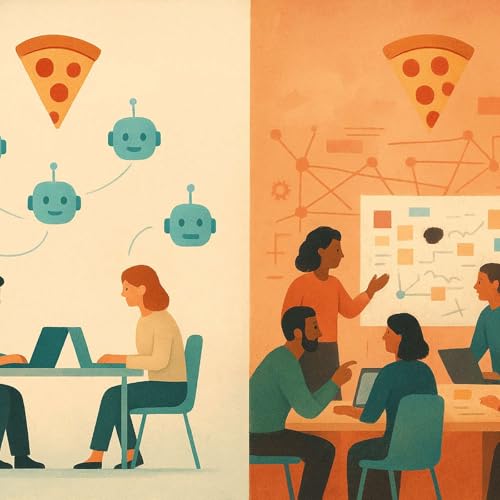In this episode, Dave and Peter sit down with Radhika Dutt, author of "Radical Product Thinking: The New Mindset for Innovating Smarter," to explore why iteration-obsessed product development is failing organizations.
Radhika shares hard-learned lessons from her 25-year career across diverse industries and five acquisitions, introducing the concept of "product diseases" like hero syndrome, pivotitis, and obsessive sales disorder that plague modern product teams. She challenges conventional wisdom around OKRs and goal-setting, explaining why they often create an illusion of performance while masking real problems.
The conversation explores why goals, targets, and OKRs backfire and what actually works instead. Radhika introduces her tried-and-tested alternative: a framework for puzzle-setting and puzzle-solving called OHLs (Objectives, Hypotheses, and Learnings). This approach helps companies develop a mindset that equips teams to experiment, learn, and adapt in a disciplined way, ultimately delivering far better results than traditional goal-setting methods.
The discussion dives deep into crafting detailed, hypothesis-driven vision statements that actually help teams make decisions, rather than fluffy corporate speak that sounds inspiring but provides no guidance. Radhika explains how to balance vision debt against short-term survival needs using her three-question puzzle-solving framework.
Key Takeaways:
- The importance of writing good hypotheses and understanding customer pain points deeply before defining experiments and measurements
- Organizations need to get much closer to their target customers to truly understand their behaviors and pain points, enabling better vision statements and hypotheses that resonate
- Effective vision statements must enable decision-making; if you can't make yes/no decisions based on your vision, and understand the trade-offs between short-term survival and long-term vision, it's not valuable enough
Free Resource: Download the OHLs template and toolkit: https://www.radicalproduct.com/toolkit/#OHLToolkit
 39 分
39 分 25 分
25 分 29 分
29 分 18 分
18 分 34 分
34 分 36 分
36 分 2025/09/1116 分
2025/09/1116 分 36 分
36 分
